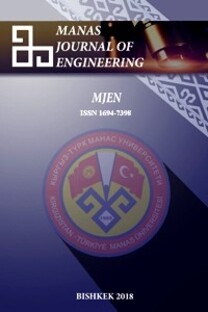Electrochemical biosensor for simultaneously detection of Tamoxifen
tamoxifen, DNA, biosensors, electrochemical biosensor
Electrochemical biosensor for simultaneously detection of Tamoxifen
tamoxifen, DNA, biosensors, electrochemical biosensor,
___
- [1]. M. Clemons, S. Danson, and A. Howell, “Tamoxifen ('Nolvadex’): A review,” Cancer Treat. Rev., vol. 28, no. 4, pp. 165–180, 2002, doi: 10.1016/S0305-7372(02)00036-1.
- [2]. D. J. Bentrem and V. Craig Jordan, “Tamoxifen, raloxifene and the prevention of breast cancer.,” Minerva Endocrinol., vol. 27, no. 2, pp. 127–139, 2002, doi: 10.1210/edrv.20.3.0368.
- [3]. S. Mandlekar and A. N. T. Kong, “Mechanisms of tamoxifen-induced apoptosis,” Apoptosis, vol. 6, no. 6, pp. 469–477, 2001, doi: 10.1023/A:1012437607881.
- [4]. M. Fouladgar, H. Karimi-Maleh, F. Opoku, and P. P. Govender, “Electrochemical anticancer drug sensor for determination of raloxifene in the presence of tamoxifen using graphene-CuO-polypyrrole nanocomposite structure modified pencil graphite electrode: Theoretical and experimental investigation,” J. Mol. Liq., vol. 311, p. 113314, 2020, doi: 10.1016/j.molliq.2020.113314.
- [5]. I. Girault, I. Bièche, and R. Lidereau, “Role of estrogen receptor α transcriptional coregulators in tamoxifen resistance in breast cancer,” Maturitas, vol. 54, no. 4, pp. 342–351, 2006, doi: 10.1016/j.maturitas.2006.06.003.
- [6]. M. M. T. Buckley and K. L. Goa, “Tamoxifen: A Reappraisal of its Pharmacodynamic and Pharmacokinetic Properties, and Therapeutic Use,” Drugs, vol. 37, no. 4, pp. 451–490, 1989, doi: 10.2165/00003495-198937040- 00004.
- [7]. B. J. A. Furr and V. C. Jordan, “The pharmacology and clinical uses of tamoxifen,” Pharmacol. Ther., vol. 25, no. 2, pp. 127–205, 1984, doi: 10.1016/0163-7258(84)90043-3.
- [8]. K. Lee, B. A. Ward, Z. Desta, D. A. Flockhart, and D. R. Jones, “Q uantification of tamoxifen and three metabolites in plasma by high-performance liquid chromatography with fluorescence detection : application to a clinical trial,” vol. 791, pp. 245–253, 2003.
- [9]. X. Liu, J. Zhang, J. Yin, and H. Duan, “Analysis of hormone antagonists in clinical and municipal wastewater by isotopic dilution liquid chromatography tandem mass spectrometry,” pp. 2977–2985, 2010, doi: 10.1007/s00216-010-3531-0.
- [10]. S. Xiao, Y. Yang, J. Zhang, Y. Wu, and B. Shao, “[Determination of 6 antiestrogens in fish tissues by ultra performance liquid chromatography-tandem mass spectrometry],” Se pu = Chinese J. Chromatogr., vol. 29, no. 11, p. 1055—1061, 2011, [Online]. Available: http://europepmc.org/abstract/MED/22393691.
- [11]. K. Radhapyari, P. Kotoky, and R. Khan, “Detection of anticancer drug tamoxifen using biosensor based on polyaniline probe modified with horseradish peroxidase,” Mater. Sci. Eng. C, vol. 33, no. 2, pp. 583–587, 2013, doi: 10.1016/j.msec.2012.09.021.
- [12]. S. Yanik, D. Ozkan-ariksoysal, and S. Yilmaz, “ELECTROCHEMICAL BIOSENSOR FOR BRCA1 GENE AND TAMOXIFEN INTERACTION,” vol. 4, no. 1, pp. 35–48, 2020.
- [13]. L. Dornelles, S. Hernandez, G. Marrazza, M. Mascini, and L. Tatsuo, “Investigations of the antioxidant properties of plant extracts using a DNA-electrochemical biosensor,” vol. 21, pp. 1374–1382, 2006, doi: 10.1016/j.bios.2005.05.012.
- [14]. E. Küpeli Akkol, I. Süntar, M. Ilhan, and E. Aras, “In vitro enzyme inhibitory effects of Rubus sanctus Schreber and its active metabolite as a function of wound healing activity,” J. Herb. Med., 2015, doi: 10.1016/j.hermed.2015.09.002.
- [15]. I. Erlund et al., “Pharmacokinetics of quercetin from quercetin aglycone and rutin in healthy volunteers,” Eur. J. Clin. Pharmacol., vol. 56, no. 8, pp. 545–553, 2000, doi: 10.1007/s002280000197.
- [16]. S. Allahverdiyeva, O. Yunusoğlu, Y. Yardım, and Z. Şentürk, “First electrochemical evaluation of favipiravir used as an antiviral option in the treatment of COVID-19: A study of its enhanced voltammetric determination in cationic surfactant media using a boron-doped diamond electrode,” Anal. Chim. Acta, vol. 1159, 2021, doi: 10.1016/j.aca.2021.338418.
- [17]. H. Subak and D. Ozkan-Ariksoysal, “Label-free electrochemical biosensor for the detection of Influenza genes and the solution of guanine-based displaying problem of DNA hybridization,” Sensors Actuators, B Chem., vol. 263, 2018, doi: 10.1016/j.snb.2018.02.089
- ISSN: 1694-7398
- Yayın Aralığı: 2
- Başlangıç: 2001
- Yayıncı: KIRGIZİSTAN-TÜRKİYE MANAS ÜNİVERSİTESİ
On Matrix Sequence of modified Tribonacci-Lucas Numbers
Yüksel SOYKAN, Erkan TAŞDEMİR, Vedat İRGE
Mustafa BİLGİN, Mustafa ATASEVER
Stability Analysis and Periodictly Properties of a Class of Rational Difference Equations
Elsayed ELSAYED, Badriah ALOUFİ
Tuba ERŞEN DUDU, Duygu ALPASLAN
Solidification of tannery sludge with various binders
On (α,φ)-weak Pata contractions
Immobilization of xylanase enzyme on poly-(HEMA-co-GMA) cryogel
